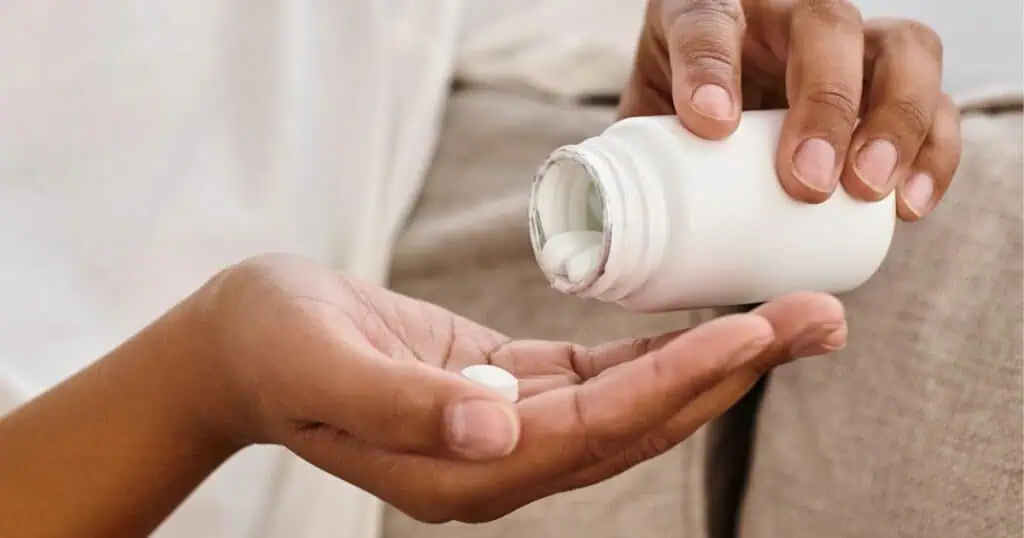Trace Minerals vs Electrolytes in Supplements for Women: Why it matters

If you’ve ever flipped over a supplement bottle or looked at a fancy electrolyte drink, you’ve probably seen minerals like magnesium, zinc, potassium, or selenium listed on the label. Some are called trace minerals, others are labeled electrolytes—and it’s no wonder many women ask me:
“What’s the difference between trace minerals vs electrolytes, and does it really matter?“
As a nutritionist who works with postmenopausal women navigating fatigue, weight gain, hot flashes, and hormonal shifts, I see this confusion all the time.
Let’s break it down clearly—because understanding this difference can transform your energy, metabolism, and overall well-being.
What Are Electrolytes?
Electrolytes are minerals that carry an electrical charge when dissolved in body fluids.
They’re essential for maintaining:
- Hydration and fluid balance
- Nerve signaling
- Muscle contractions (including your heart!)
- pH balance
The major electrolytes include:
- Sodium
- Potassium
- Magnesium
- Calcium
- Chloride
- Phosphate
- Bicarbonate
You lose electrolytes through sweat, urine, and even ongoing stress.
For women in midlife, electrolytes are particularly important—because adrenal and kidney function can shift as we age, leading to more fluid imbalance, bloating, and fatigue if electrolytes aren’t properly replenished.
What Are Trace Minerals?
Trace minerals, on the other hand, are minerals your body needs in very small amounts—usually less than 100 mg per day.
They do not carry an electrical charge like electrolytes, but they are vital for:
- Thyroid health (hello, iodine and selenium)
- Enzyme activity
- Immune defense
- Hormone production
- Wound healing, skin repair, and collagen formation
Examples of trace minerals include:
- Zinc
- Iron
- Selenium
- Iodine
- Copper
- Chromium
- Manganese
- Molybdenum
Even though they’re needed in tiny amounts, deficiencies can have a huge impact on energy, mood, metabolism, and even hair and skin health.
Why This Difference Matters in Supplements for Women in Midlife
As women move through perimenopause and postmenopause, our mineral needs become more critical—not less.
Here’s why:
Hot flashes, night sweats, and disrupted sleep can deplete electrolytes rapidly.
Thinning hair, sluggish thyroid, or slow metabolism often point to low trace minerals.
Digestive changes, such as reduced stomach acid or sluggish gallbladder function, can make it harder to break down and absorb minerals from food.
Even if you’re eating a healthy, whole-food diet, you may still come up short—especially since modern soils are more depleted than they were 50 years ago. This means today’s vegetables, grains, and even animal products often contain fewer minerals than they used to.
Holistic Nutritionist Tips for Replenishing your Trace Minerals and Electrolytes
Hydrate with purpose
Don’t just drink plain water—especially if you experience bloating or find yourself running to the bathroom frequently. Add a clean electrolyte powder without artificial sweeteners, or simply stir in a pinch of sea salt with a squeeze of fresh lemon. Skip the neon-colored sports drinks loaded with sugar.
Eat mineral-rich whole foods
- Electrolytes: Coconut water, leafy greens, bone broth, avocado, pumpkin seeds.
- Trace minerals: Seaweed, Brazil nuts (rich in selenium), grass-fed liver, shellfish, legumes, and fermented foods like sauerkraut.
Watch for subtle signs of deficiency
Persistent fatigue, muscle cramps, restless legs, brain fog, brittle nails, or unexplained hormonal fluctuations may be your body waving a red flag.
Test for your levels of trace minerals and electrolytes, don’t guess!
Functional testing can provide clarity if you suspect deficiencies. Your practitioner may recommend a mineral panel to see exactly where you’re low.
The Bottom Line: Trace Minerals vs Electrolytes
Electrolytes and trace minerals aren’t the same—but they work hand in hand. Think of electrolytes as your body’s electric wiring—they keep the lights on and the currents flowing. Trace minerals are more like the tools in your repair kit—they fine-tune your hormones, metabolism, and immune function behind the scenes.
Both are vital—especially in midlife, when your body is working harder to maintain balance amidst hormonal changes, increased stress, and years of nutrient depletion.
Supporting your mineral balance is one of the most overlooked yet powerful ways to regain energy, improve sleep, and age vibrantly—without extreme diets or expensive supplements.
Ready to restore your mineral balance naturally?
Download my free resource: The Midlife Mineral Reboot Guide—designed to help women over 45 reclaim their energy, balance their hormones, and nourish their bodies with the minerals they’re missing.

